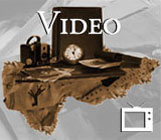27
Snow shed construction - rails, crane and ties.East end of Laurie snow shed, British Columbia, Canada
 Credits:
Credits:Revelstoke Railway Museum Collection
28
As a railroader you needed to be prepared to respond to emergencies with resourcefulness. Ed remembers putting a fire out in the Laurie snow sheds using a hard hat to haul water . . .29
Laurie snow sheds on fire . . .24 November 2011
Business Car #4, Revelstoke Railway Museum, Revelstoke, British Columbia, Canada
 Credits:
Credits:Speaker: Edward Jaatteenmaki
Coffee Club members: John (Jack) Carten, W. L. Handley and Ernie Ottewell
Filmed by Michelle Cole
30
West portal and fanhouse of Connaught TunnelPost 1915
Rogers Pass, British Columbia, Canada
 Credits:
Credits:Revelstoke Railway Museum Collection
31
Responding to the challenges of the landscape, loss of lives and the cost of maintenance, CP began construction on the Connaught Tunnel in 1913, under Rogers Pass. Railroaders still marvel at the construction, built without the benefit of modern technology, the tunnel is straight. On a clear day, you can literally see the light at the end of the tunnel five miles (eight kilometers) away.32
Connaught Tunnel contruction crewCirca 1914
Rogers Pass, British Columbia, Canada
 Credits:
Credits:Revelsoke Railway Museum Collection
33
Clancy describes the construction of tunnel ceilings. Can you imagine being part of the construction crew? Later, laser crews on moles monitored tunnel conditions.34
"They didn't want a big chunk of rock falling in the tunnels."15 December 2011
Business Car #4, Revelstoke Railway Museum, Revelstoke, British Columbia, Canada
 Credits:
Credits:Speaker: Clarence (Clancy) L. Boettger
Coffee Club members: Bill Belton, Edward Jaatteenmaki, W. L. Handley and Hugh Chase
Filmed by Michelle Cole
35
Crew inside the cut of the Connaught Tunnel during construction.Circa 1914
Rogers Pass, British Columbia, Canada
 Credits:
Credits:Revelstoke Railway Museum Collection
36
Operations of the railway extend beyond the infrastructure of track, and buildings. The methods of communication and realities of progress shape everyday experiences. The railway's dynamic nature requires workers to adapt. Iconic images like Morse code and steam engines have made way for diesel electric engines and computers. Fortunately you can revisit these change through the memories of railroaders who were there . . .37
Al Baird in operator's officePre -1960s
West of Kamloops, British Columbia, Canada
 Credits:
Credits:Revelstoke Railway Museum Collection
38
Ken, a retired telegraph operator, demonstrates use of the Morse code key. A form of communication instrumental to the railroads development but understood by few today.39
"He can still do the code . . ."22 March 2012
Revelstoke Railway Museum, Revelstoke, British Columbia, Canada
 Credits:
Credits:Speaker: Ken Magnes
Filmed by Michelle Cole